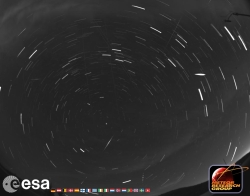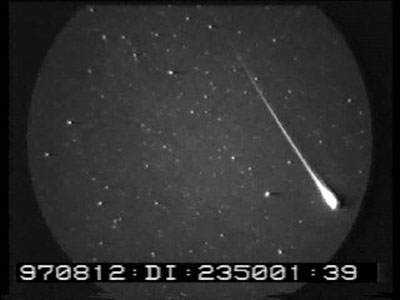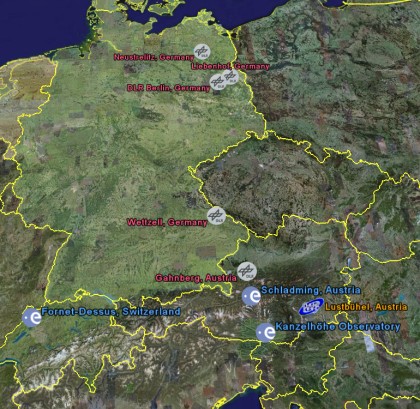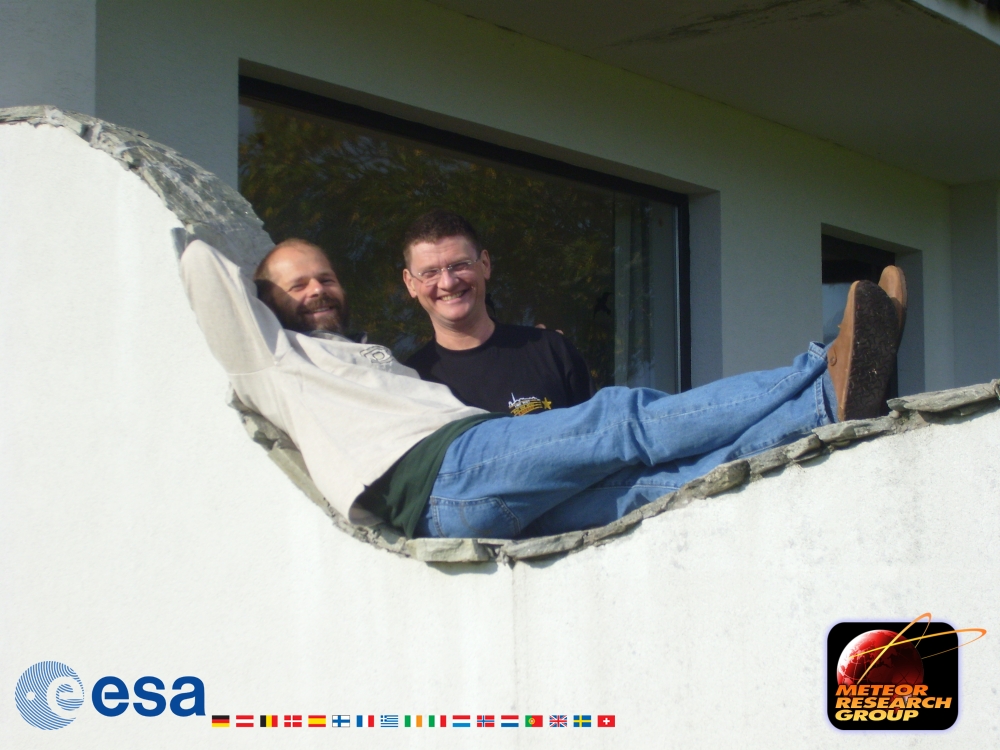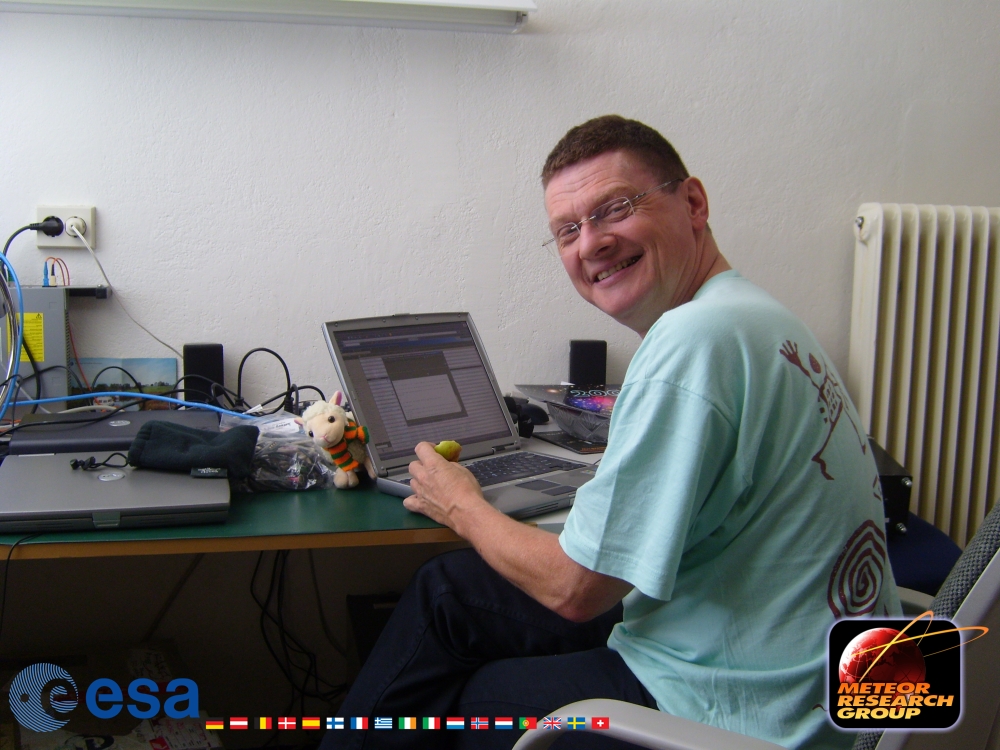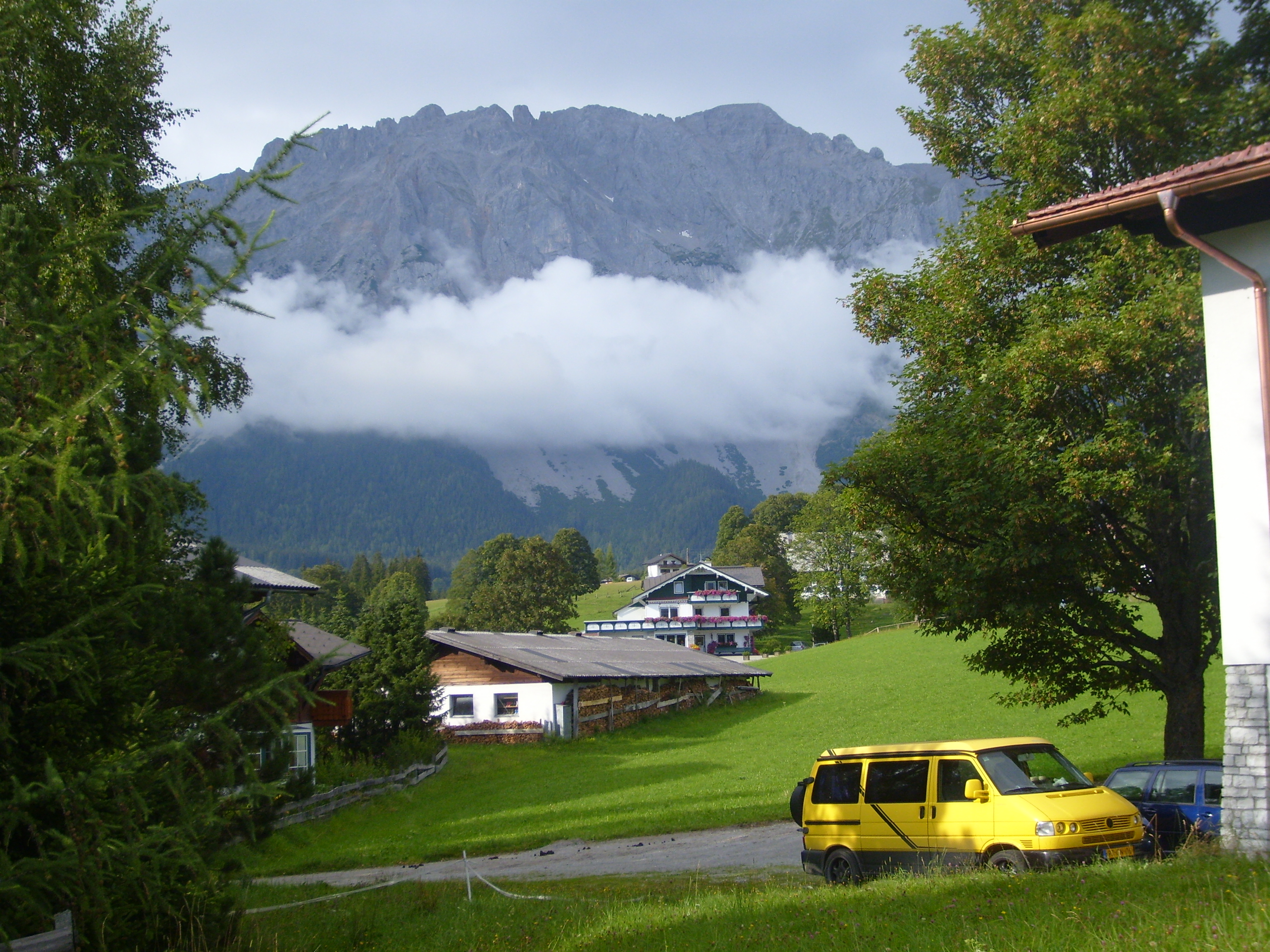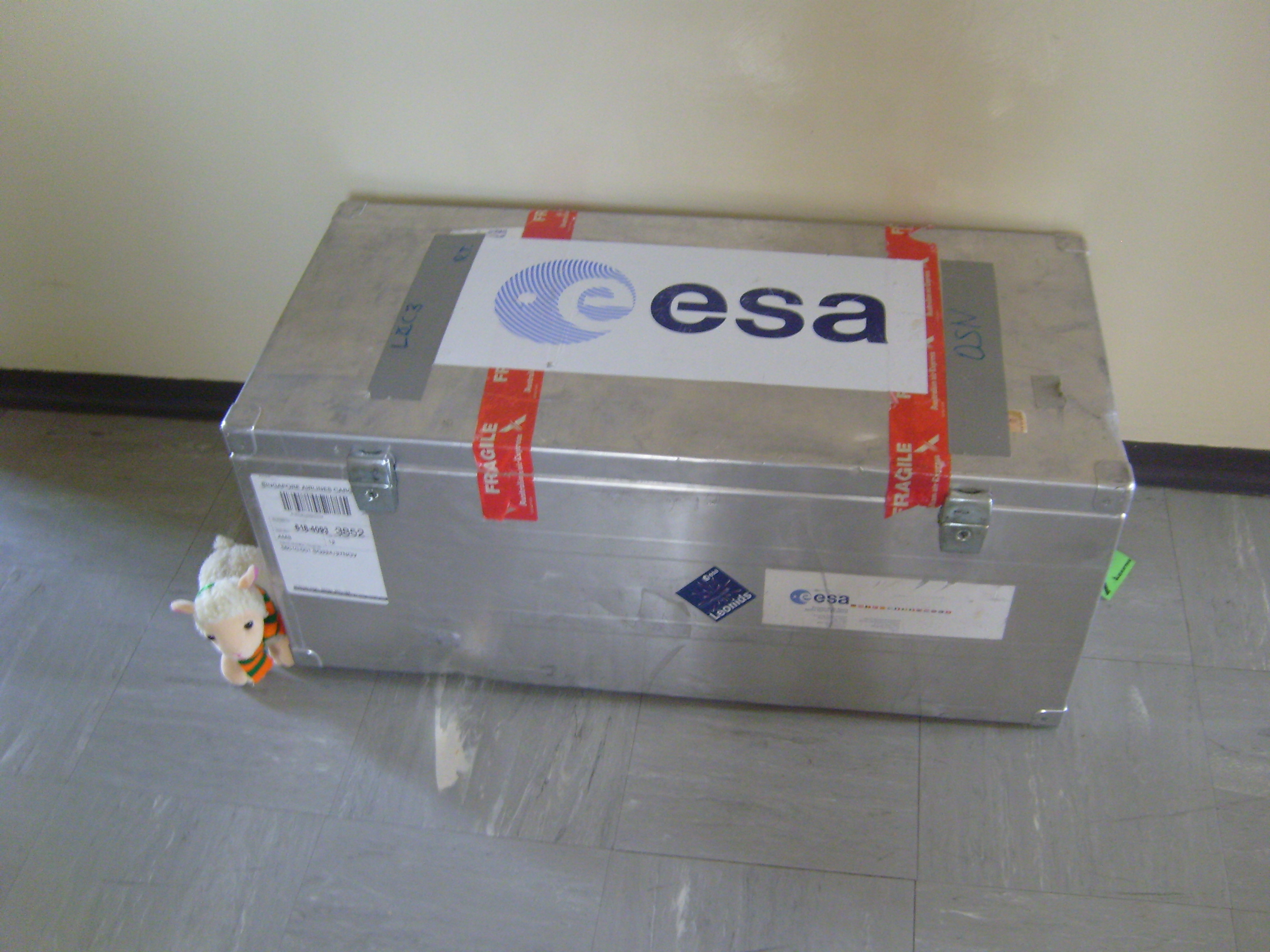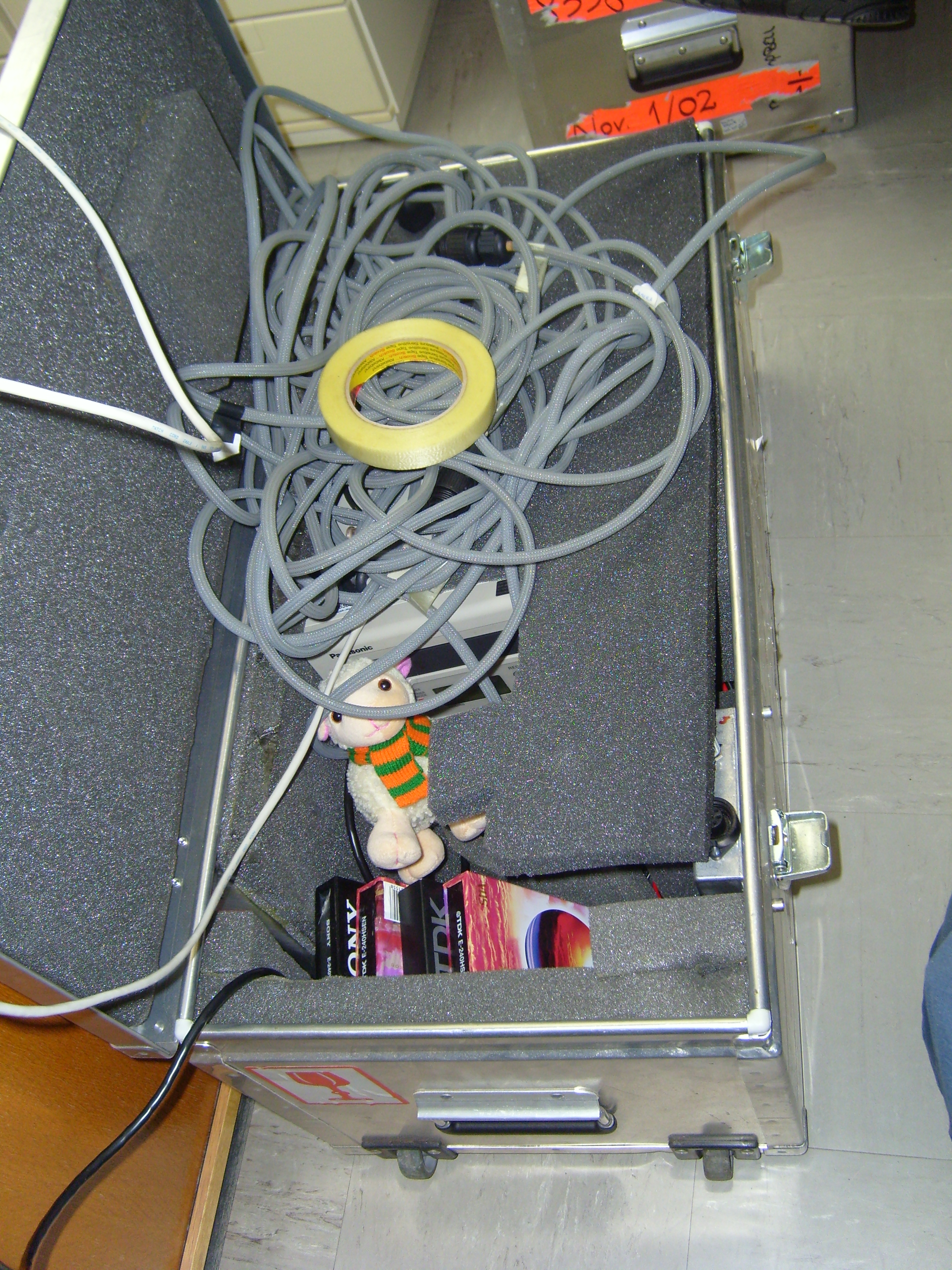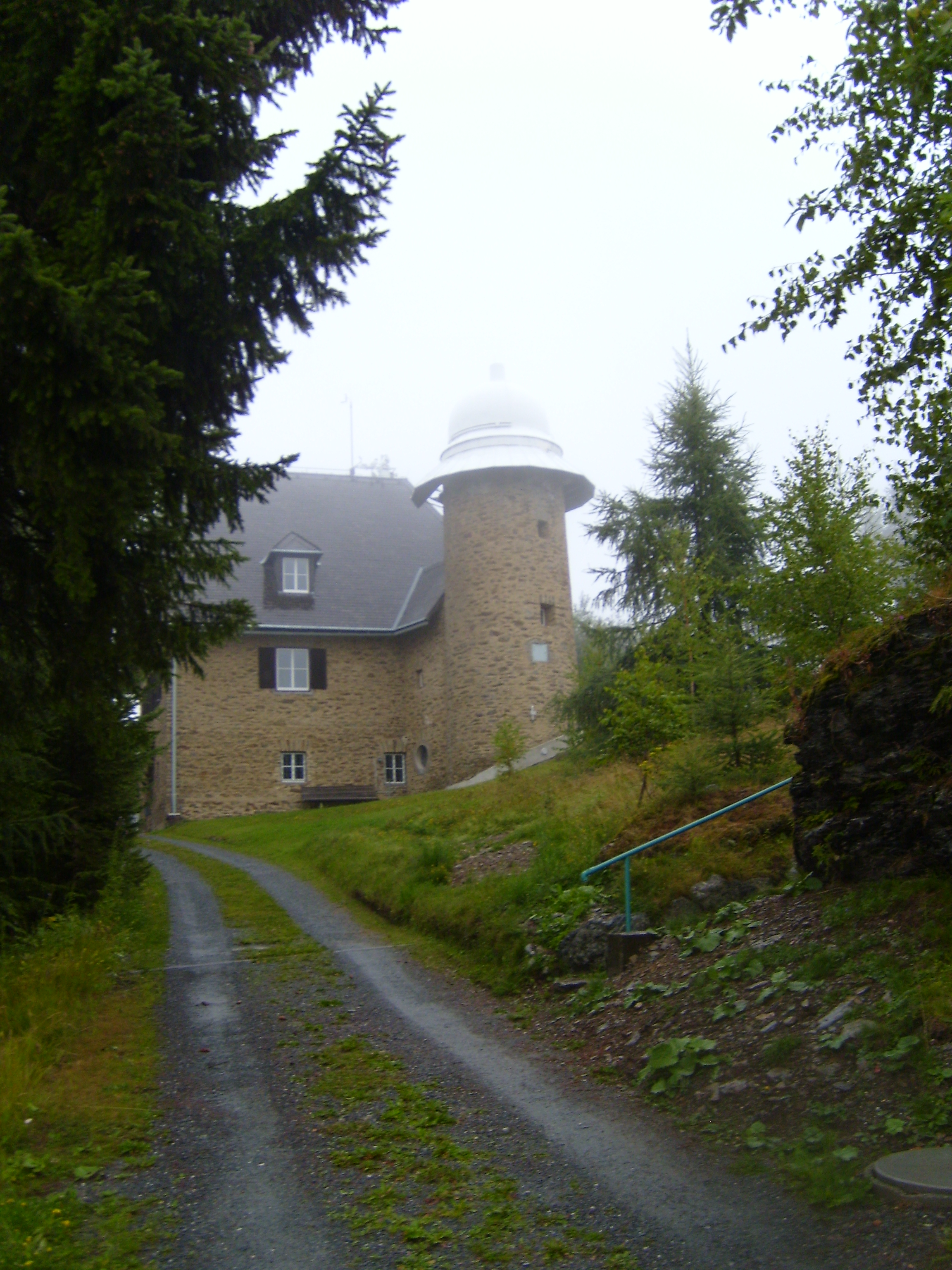Perseids 2007 (Austria) - Meteor
2007 Perseid Campaign - Austria/Germany |
||||||||||||||||||||||||||||||||||||||||||||||||||||||||||||||||||||||||||||||||||||||||||
Introduction
|
||||||||||||||||||||||||||||||||||||||||||||||||||||||||||||||||||||||||||||||||||||||||||
The Perseids
The 2007 PeakEven though the European Peak occured during early daylight hours, for those brave enough to venture out to a dark site in the pre-dawn hours on the mornings of Sunday 12 and Monday 13 August a good show was assured... weather permitting. Due to the high inclination of the orbit of Swift-Tuttle to the plane in which the Earth and most of the planets orbit, the meteoroid stream is less affected by the gravitation of the big planets than other meteoroid streams and this contributes the the reliability of the annual Perseids. The Perseid meteoroids also encounter the Earth's atmosphere at a relatively high velocity, c. 212,433 km/hour or 59 km/second and as they are heated and ablated by the friction of the thicken Terrestrial atmosphere their brightnesses reach an average of +2.3 magnitudes, that's about as bright as the brightest stars in the characteristic W-shaped Cassiopeia. |
||||||||||||||||||||||||||||||||||||||||||||||||||||||||||||||||||||||||||||||||||||||||||
Observation Stations
|
||||||||||||||||||||||||||||||||||||||||||||||||||||||||||||||||||||||||||||||||||||||||||
Night-by-Night ReportsKanzelhöhe, Austria13/08/07 - 00:11:04 CEST - Well it's peak night and while it's dry outside the clouds aren't cooperating. As of now there's 90% cloud coverage. All the equipment (the 2 image-intensified video cameras, the SPOSH, and the Watec) has been set up and now we can but wait... We've seen several bright visual Perseids already and will post images as soon as the capturing process is complete. 01:33:06 CEST - The sky has cleared now enough for us to get a reference stars image for our video cameras, so they are now pointing in the right direction (towards Joe Zender in Schladming) and are waiting for some "juicy" Perseids. The SPOSH camera is ticking away happily. And the Watec system that will fly with Jason Hatton on Peter Jenniskens' Aurigid MAC mission at the end of the month is also operating. 03:04:02 CEST - Well about an hour ago we noticed that VCR recording the feed from our specrtral-video-camera was not on and that that entire system had no power. But we didn't fret... much. Detlef whipped out the soldering iron and multi-meter... a few screws adjusted here, connections measured; unsoldered; resoldered; remeasured, a power box exchanged and now we're back in business. Sky still 80% clear... time for some visual observation. So far 1 hour 45 mins of video camera observations we have 11 Perseids, 5 sporadics, and 1 κ Cygnid and that's with a limiting stellar magnitude of 6.3 and a 15° FOV. The fun continues... 04:26:55 CEST - After 3 hours of clear skies observing we have 19 Perseids, 10 Sporadics and 2 κ Cygnids with our intensified video cameras. There is a high-altitude haze moving in slowly from the south now that make spoil our fun. Orion is climbing up over the eastern horizon and Mars is hanging below The Seven Sisters in all its reddish glory. 11/08/07 - The second night was no better than the first. The sound of the heavy rain meant we didn't even need to venture to the window to check the weather. We spent the night running further tests on our SPOSH camera and double-checking the functionality of the video-camera systems. Better luck tonight... we hope! 10/08/07 - The first night's attempts to setup and test the cameras proved futile as dense cloud and intermittent rain thwarted our valiant efforts. |
||||||||||||||||||||||||||||||||||||||||||||||||||||||||||||||||||||||||||||||||||||||||||
|
Perseids@Home: You can observe too! To enjoy the Perseid meteor shower from your location, you don't need expensive optical instruments. A pair of naked eyes and a dark location will do! The best way to observe the Perseids is to look towards the northeast after dark. Perseid meteors appear to originate from the constellation of Perseus which at midnight lies just below the easily recognisable 'W' of Cassiopeia. The highest frequency of meteors is likely just before dawn in the morning of Monday August 13th, when the Earth passes through the densest parts of the Perseid dust stream. However, many Perseid meteors will also be visible in the nights surrounding this maximum. The International Meteor Organization collects visual observations from amateurs and uses them to create an online activity analysis. You can do a useful scientific contribution by submitting your own observations! |
||||||||||||||||||||||||||||||||||||||||||||||||||||||||||||||||||||||||||||||||||||||||||
More details |
||||||||||||||||||||||||||||||||||||||||||||||||||||||||||||||||||||||||||||||||||||||||||
Campaign Photo GalleryClick to Enlarge...
|
||||||||||||||||||||||||||||||||||||||||||||||||||||||||||||||||||||||||||||||||||||||||||
- Removed a total of (8) style font-weight:bold;
- Removed a total of (3) style float:right;
- Removed a total of (117) style margin:0;
- Removed a total of (117) style padding:0;
- Removed a total of (57) align=center.
- Removed a total of (2) align=left.
- Removed a total of (9) border attribute.
- Removed a total of (7) cellspacing attribute.








































 Sign in
Sign in
 Science & Technology
Science & Technology
